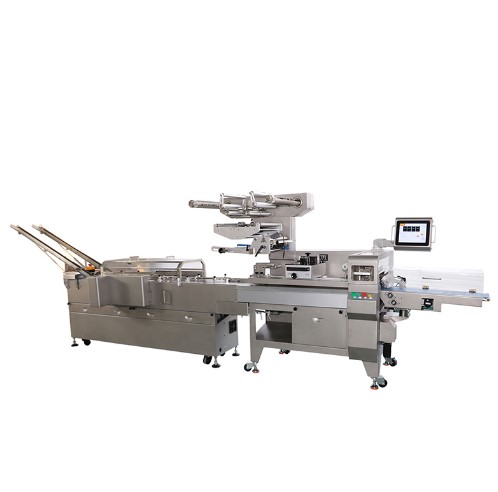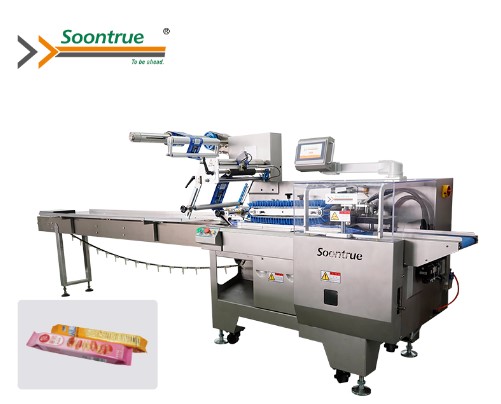How To Choose A Flow Packing Machine?
In the realm of packaging, efficiency and precision are paramount. Flow packing machines have emerged as indispensable tools for various industries, offering seamless wrapping and packaging solutions for a myriad of products. Whether you work in the food, pharmaceutical, or consumer products industries, choosing the proper flow packaging machine can have a substantial impact on productivity and product presentation. In this article, we will guide you to make informed decisions tailored to your specific needs.
Understanding Your Requirements
Before diving into the market offerings, it's crucial to assess your unique requirements. Consider the type and size of your items, manufacturing volume, desired packaging speed, and any specific packaging requirements, such as shelf life or product fragility. Understanding these requirements will serve as a foundation for selecting a flow packing machine that aligns with your operational needs.
Types Of Flow Packing Machines
Flow packing machines come in various types, each designed to cater to specific packaging requirements. Common types include horizontal flow wrappers, vertical form-fill-seal (VFFS) machines, and thermoformers. Horizontal flow wrappers are useful for wrapping solitary or several products in a continuous action. VFFS machines are suitable for creating bags from roll stock film, filling them with the product, and sealing them vertically. Thermoformers are adept at forming packages from heated plastic sheets, offering precise molding for products with unique shapes.
Considerations for Selection
Here are some key considerations for selection:
Packaging Material Compatibility
Selecting the appropriate packaging material is crucial to ensure product protection, presentation, and shelf life. Different flow packing machines may have particular requirements for the type and thickness of packaging materials that they can handle. For example, some machines may work best with thin films suitable for lightweight products, while others may require thicker materials for added durability or barrier properties.
When selecting a flow packing machine, ensure that it can handle the specific packaging materials necessary for your products. Consider factors such as film type (e.g., polyethylene, polypropylene, or laminates), film thickness, and special properties like high-barrier films for products sensitive to moisture, oxygen, or light. Compatibility with your chosen package material assures optimal sealing, aesthetics, and overall product integrity over the shelf life.
Production Speed and Efficiency
Efficiency in production is paramount to meet demand and optimize operational costs. Flow packing machines have varying production speeds, which are commonly measured in cycles per minute (CPM). Higher CPM rates signify greater output potential but may also require careful consideration of factors such as product handling, film feeding, and sealing mechanisms to maintain consistent quality.
Assess your production requirements and anticipated output volume to determine the optimal production speed for your flow packing machine. When considering speed requirements, take into account batch sizes, peak production periods, and future growth estimates. Additionally, analyze the machine's overall efficiency, including downtime for maintenance, changeovers between products, and energy consumption, to ensure maximum productivity and cost-effectiveness.
Packaging Flexibility
The ability to accommodate various product sizes, shapes, and packaging configurations enhances operational flexibility and versatility. Flow packaging machines with adjustable film width, length, and sealing pressure allow for smooth adaptability to a wide range of product specifications without the need for extensive human modifications or reconfiguration.
Evaluate the machine's ability to handle various product types and package formats. Look for features such as automatic adjustments for product dimensions, programmable recipe settings for quick changeovers between product variants, and compatibility with accessories or add-ons for specialized packaging requirements. Prioritize equipment with a wide range of customization choices to future-proof your packing skills and accommodate changing consumer demands.
Quality of Sealing
The integrity of the seal directly impacts product freshness, safety, and shelf life. A dependable flow packaging machine should constantly produce strong, airtight seals that keep the contents safe from external pollutants, moisture, and manipulation during storage and distribution.
When evaluating sealing quality, consider factors such as seal strength, uniformity, and clarity. Look for machines with modern sealing methods, such as hot air, hot knife, or ultrasonic sealing, which are noted for their precision and dependability. Additionally, assess the machine's ability to handle challenging sealing conditions, such as irregular product shapes, textured surfaces, or high-speed production rates, without compromising seal integrity.
Ease of Maintenance and Operation
User-friendly design and effective maintenance methods are critical for reducing downtime and increasing productivity. Flow packing machines that feature intuitive controls, accessible components, and streamlined maintenance routines empower operators to optimize performance and troubleshoot issues promptly.
Prioritize machines with ergonomic interfaces, clear instructional guides, and integrated diagnostic systems to simplify operation and troubleshooting processes. Look for features like tool-less changeover mechanisms, fast-release components, and remote monitoring capabilities that allow for quick adjustments while reducing manual intervention during normal maintenance procedures. Additionally, consider the availability of comprehensive training programs, technical support services, and spare parts inventory to ensure ongoing operational reliability and minimize disruptions to your production schedule.
Budget Considerations
Balancing performance requirements with budget constraints is essential when investing in a flow packing machine. While it is tempting to focus exclusively on the initial expenditures, consider the entire cost of ownership, which includes maintenance, operating expenses, and potential returns on investment (ROI) from enhanced efficiency and reduced product waste during the machine's lifetime.
Conduct a thorough cost-benefit analysis to evaluate the long-term implications of different investment options. Compare upfront expenses against anticipated labor, material, and energy savings, as well as prospective income advantages from increased production capacity and product quality.Additionally, explore financing options, leasing agreements, and extended warranty packages to mitigate upfront expenses while ensuring access to reliable equipment and support services.
Conclusion
Choosing the right flow packing machine is a pivotal decision that can significantly impact your packaging operations' efficiency and product quality. Besides, it is also important to choose a reliable packing machine supplier. Soontrue is a leading packing machine supplier in China, devoted to offer a wide range packing machines including flow packing machines. If you are looking for a high-quality flow packing machines, look no further than us!





